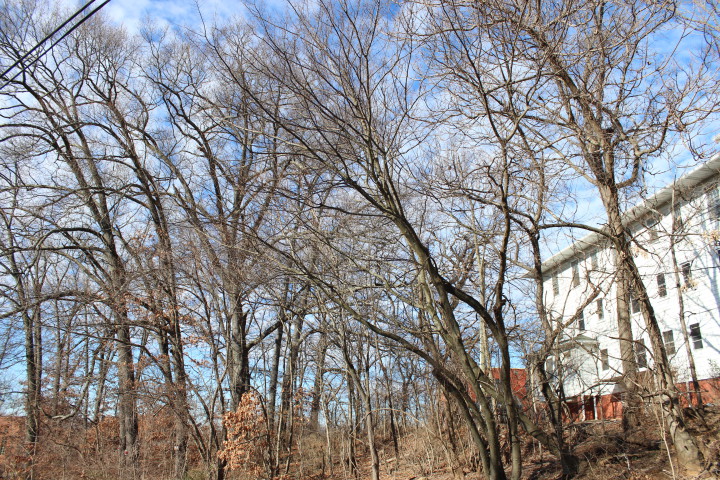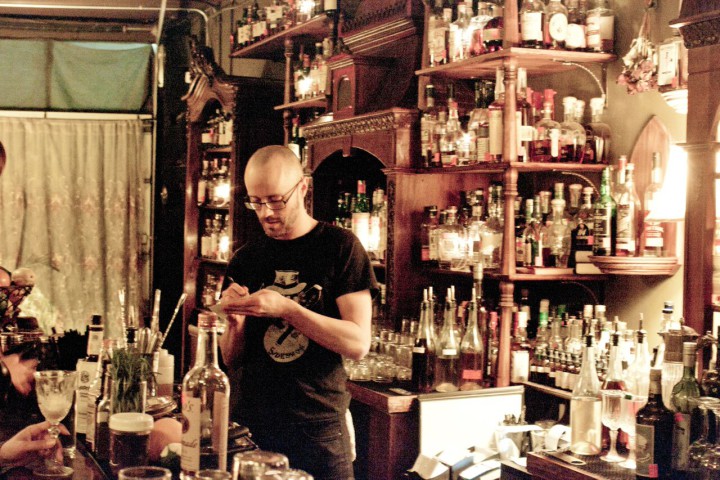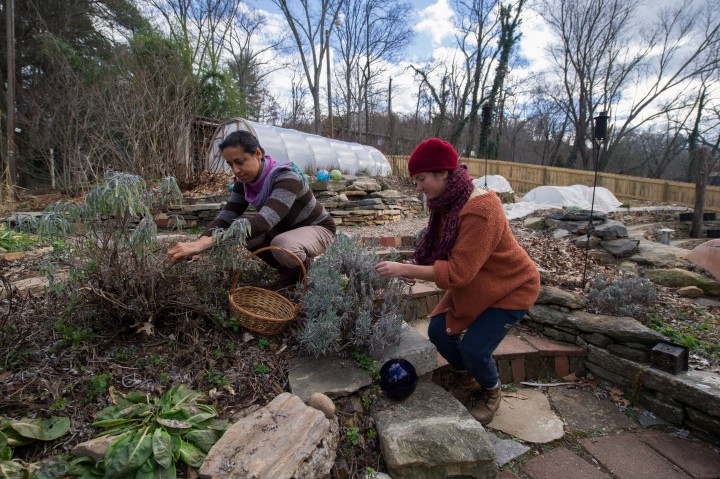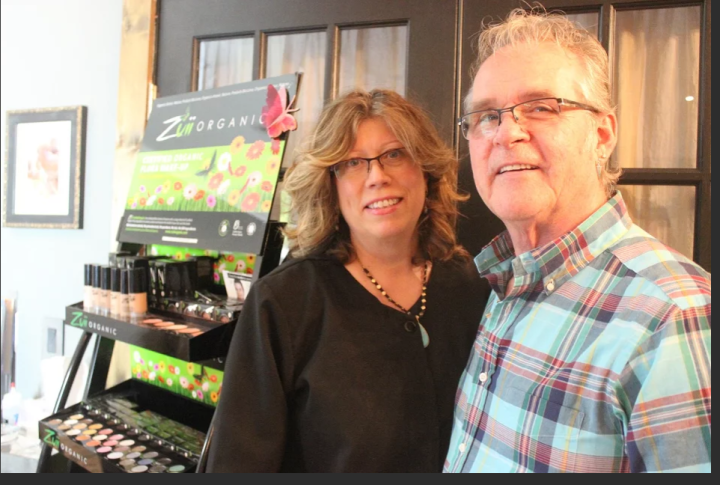Looking for some longform (or longerform) reads to cozy up with over the weekend? Here’s a round-up of our leading feature stories from the last seven days. Happy reading!
News

Blood in the valley: The Shelton Laurel Massacre’s haunting legacy
By Max Hunt
In January 1863, at the height of the Civil War, Confederate soldiers of the 64th North Carolina Regiment, composed mostly of men from the western counties, marched into Shelton Laurel. Their orders were simple: root out the deserters and Unionists using the isolated Madison County valley as a base for raids against Confederate holdings.
Over several days, the 64th fought skirmishes with residents, taking a handful of men and boys prisoner. These captives, however, would never stand trial: Instead, 13 of them, ranging in age from 13 to 60, were summarily executed in what became known as the Shelton Laurel Massacre.
The killings sparked local outrage, captured national headlines, tarnished the names of the 64th’s commanders and earned the county the dubious epithet “Bloody Madison.”
Yet more than 150 years later, debate persists as to what actually happened. And that long-ago strife is still leaving its imprint on the people and communities of Western North Carolina. (continue reading)
ArtSpace Charter School rises above the flood
By Hayley Benton
After an abnormally wet fall and weeks of unrelenting rain, an embankment abutting the ArtSpace Charter School gave way on Dec. 29.

“We were out of school, and there was a lot of rain that night,” development manager Josh Batenhorst explains. “They shut down sections of Sweeten Creek; it was just a mess. A lot of people throughout the area were experiencing flooding.”
The Swannanoa campus, he continues, sits “between Reger Avenue and Sherwood Road, and Reger is about 15-20 feet higher than our school. We’ve had some issues with flooding in our north wing for many years, but never to this extent.”
Just after midnight, part of the bank collapsed, and stormwater runoff poured down from Reger Avenue.
“The water didn’t have anywhere to go,” notes Batenhorst. “We had flooding in every room of the school except one; the school is about 40,000 square feet, and that one office is probably about 100.” (continue reading)
Oaks’ last stand: South Slope urban forest won’t get city funds
By Virginia Daffron

“Many people do not know exactly where this property is,” said Imke Durre of the half-acre wooded plot at 11 Collier Ave. on Asheville’s fast-developing South Slope. With her mother, Inge Durre, Imke is a leader of a group of citizens who mobilized to save the parcel’s 23 mature oak trees — which are estimated to be 80-100 years old — when plans to build a 48-unit apartment building on the site materialized last fall.
“However, the birds, they know very well where it is,” continued Imke, speaking at City Council on Jan. 12. In addition to the forest’s value to the birds who shelter there, the trees provide irreplaceable aesthetic and environmental benefits to Asheville’s downtown, say supporters of the effort to preserve the site. And as some of the last remnants of the former Ravenscroft School campus, the trees have historical significance as well, according to the group.
When the Durres and other preservation advocates first appeared before City Council on Sept. 8 last year, Council members agreed to explore alternatives for protecting the trees, with Councilman Cecil Bothwell commenting, “Over and over again, we lose these trees. … And I would hope that we could find some way to facilitate this, whether it is a land swap, whether it is helping to facilitate raising private funds.” (continue reading)
Charen appointed to Downtown Commission
By Virginia Daffron
With changes on the horizon for policies that shape Asheville’s downtown — design review guidelines, standards for City Council review in the central business district and planning for the city-owned property on Haywood Street, to name three — it appears that the Downtown Commission’s already-significant influence can only grow.
Perhaps an awareness of the importance of the commission’s role in promoting the sustainability and continued development of downtown was behind the bumper crop of applications City Council received for one open seat on the appointed body. Out of 15 applicants, Council selected four finalists for interviews on Jan. 26, prior to the regular session of Council.
Councilman Brian Haynes commented that he wished all four could be appointed, and Councilwoman Julie Mayfield echoed the remark, saying that the commission needs to be expanded. In the end, Franzi Charen, director of the Asheville Grown Business Alliance and co-owner of downtown retailer Hip Replacements, got the nod. (continue reading)
Arts
Terpsicorps Theatre of Dance adds a new academy to its repertoire
By Lea McLellan
Just this past summer, Terpsicorps Theatre of Dance was turning heads by holding public, outdoor rehearsals for its 2015 show, The Elements. Those high-profile practices may have helped drum up ticket sales, but the choice was also born out of necessity, as the local dance institution had lost its rehearsal space. Behind the scenes, artistic director Heather Maloy was looking for a place where her company could not only rehearse, but where she could also start a full-fledged dance academy. After long months of obtaining the proper permits and some serious renovations, Maloy realized her dream. The Academy at Terpsicorps opened in mid-September at 1501 Patton Ave. — the previous location of nightclubs Spurs and Club 1501 and the El Pobre Mexican Restaurant. (continue reading)
Food
The well-tempered tipple: Curating quality liquor menus in Asheville
By Jonathan Ammons

Perched on a stool at The Crow & Quill’s beautiful antique wooden bar, one is never at a loss for something to look at. The chandelier’s dim light casts shadows on the ornate carvings of a massive wall cabinet, which houses literally hundreds of bottles of booze — easily one of Asheville’s best-kept secrets.
“I’ve been a huge spirits fan for a decade now and had amassed a pretty large home collection,” says owner Casey Campfield. “I just realized that Asheville needed a liquor library, and I definitely view it as a spirits library that is going to encompass a lot of good selections from all of the major varieties of spirits.”
Bourbon, scotch, gin, rum, cognac, tequila, mescal, Amaro and just about every other variety of liqueur imaginable are all represented and in a wide array of brands and variations. Campfield estimates that there are well over 500 selections currently available at the bar, 260 of which are whiskeys. The typical cocktail bar in Asheville, mind you, may have 150 offerings, while bars in larger cities may stock 200 or so. It’s an insane amount of booze for such a small space — bottles seem to be poking out of every nook and cranny.
“Every time I get a new item in, I’m a little bit worried about it sitting on the shelf for years,” says Campfield. “And sometimes they do. But then sometimes you’ll sell three-fourths of a bottle of something in one night just because everybody is excited to try it.” (continue reading)
#avlfood: Instagram showcases Asheville’s food photography
By Lea McLellan

With Instagram being dubbed the most influential social marketing tool in 2015, it’s no wonder that Asheville’s most social media savvy businesses and individuals are photographing their most mouth-watering work and sharing it for the world to see. We spoke with professional photographers, bakers and social media masters to get the skinny on what goes into making a successful, food-focused online persona — and why being on Instagram matters.
We’ve all seen those unappetizing pictures of food that were taken with a not-so-deft hand. So what is the secret to making that plate of pasta look as good on camera as it tastes? Sarah Snyder, photographer, baker at Old Europe Cafe and blogger at formationsofmentalobjects.com, says that photographing food isn’t all that much different from photographing a face, in that not all angles are going to work. “I think the key is daylight,” she adds. “I’ll put the food up to a window and let natural light show how the bread is caramelized and how the colors naturally look.”
Photo taken by Nicole McConville for Tara Jensen’s Instagram feed, @bakerhands.
Composition is also a consideration. “I think also putting the food in context is important,” Snyder says. “You aren’t just photographing a muffin on a plate, but you’re photographing it with the knife placed there and with the coffee cup in the corner.” (continue reading)
Beer Scout: Homebrewing 101
By Jesse Farthing
Brewing your own beer can be intimidating. There’s a wealth of knowledge available in the form of countless books, podcasts and Internet forums — and it can be overwhelming for a beginner to sort through.
Not to mention, Western North Carolina has such a high concentration of craft breweries, it’s fairly simple to just go buy something you know you’ll like. So why even bother with homebrew?

“There’s no reason not to get into it if you like craft beer,” says Tedd Clevenger, owner of Asheville Brewers Supply. “It’s far easier than you’d think. Brewing is very simple. It’s very creative and very scientific, so it doesn’t really matter what kind of personality you have — it enables you to combine both of those aspects, both sides of your brain, if you will. It’s really cool having something unique to be able to share with people.”
At the basic level, all that’s needed is a kettle, a bucket to ferment your wort (unfermented beer) and another to bottle from.
“Everyone can start differently,” says Hops & Vines owner Alex Buerckholtz. He recommends starting with a basic kit, which includes everything you need with the exception of a kettle and ingredients. (continue reading)
Living
Environmental initiatives enhance WNC residents’ well-being
By Pat Barcas
Today, slogans like “Save the Whales,” “No Nukes” and “Save the Planet” are commonplace. But while such global environmental rallying cries may help spread awareness and further a broad green agenda, they’re not typically seen as means to improved physical and mental well-being.

founding director, and Emily MacGibeny, work- trade intern, harvest winter herbs at Ashevillage. Photo by Pat Barcas
In fact, however, the links between human health and environmental balance are profound, local advocates maintain.
Where your house is located and what it’s made of can affect your health just as much as eating right and getting sufficient exercise, says Maggie Leslie, program director for the Western North Carolina Green Building Council. The Asheville-based nonprofit offers various services, including educating homebuyers and builders about green building practices and conducting audits of existing homes and potential building sites.
This “green gauge,” she explains, ranks homes on a wide range of criteria, including things like indoor air quality as well as access to goods and services and green space. The rankings help current and potential homeowners see how a dwelling or neighborhood stacks up. “It’s important to a family’s health, and having a more healthy home that’s close to nature means, in most cases, a more healthy family,” says Leslie. (continue reading)
Organic salons reject toxic beauty products
By Elizabeth L. Harrison

Tucked away off the main road linking Brevard with Rosman, its diminutive neighbor, Julie and Terry Craig have carved out a niche in organic hair care.
Inside the intricate wrought-iron doors of Rapture Organic Salon & Gallery, clients seeking to avoid the chemicals that pervade many mainstream salons treat themselves to an “eco-chic” spa experience that’s hushed and floral. But for the Craigs, there’s more at stake than just providing a tranquil escape from the stresses of everyday life: They chose to go 100 percent organic for the sake of their own health and well-being.
As it becomes more widely known that chemicals commonly found in beauty products have been linked to serious health problems and that federal regulations provide only limited protection for those most at risk, some Western North Carolina salon owners are taking matters into their own hands.
“When I first got into the business, we were doing crazy stuff,” says Terry. “Nothing about it was natural.” (continue reading)
Antibiotic-resistant superbugs may be closer to home than we think
By Margaret Williams
Could a “superbug” bacteria outbreak in China threaten Western North Carolina sooner than you can say “zombie apocalypse”? It’s possible, since a deadly pathogen can make it around the globe in 24 hours or less, and in just eight hours, one E. coli bacterium can generate more than 16 million clones that make their host very, very sick — particularly if the mother strain is one of a growing number of antibiotic-resistant superbugs that have health leaders on alert from Asheville to Beijing.
“It’s a scary situation,” says Sid Thakur, a N.C. State University researcher and professor who works on the problem at “multiple levels,” from studying outbreaks across the world to helping farmers find safer ways to raise pigs in North Carolina. Bacteria have been evolving for millions of years — far longer than humans, says Thakur. “I’m not surprised when we see new antibiotic-resistant pathogens. That’s evolution.”
The list of strains resistant to antibiotics is longer than ever before, and it’s growing, he notes. (continue reading)
Opinion
Homeless need a hand up, not handouts
By John Kloeckner
I am currently homeless in Asheville. Although I don’t seek services from any organization apart from an occasional meal, clean clothes, a cup of coffee or a shower, I’m familiar with the services available and the various churches and other organizations that assist local people in need. I come from a middle-class lifestyle and a solid family background.
This idea of a 10-year plan to end chronic homelessness is hyperbole, not an achievable goal. Many local homeless people feel the plan is a political tool used to help the general voting public sleep better at night, thinking that something’s being done. The truth is, someone will become homeless tomorrow, and there are several people currently living on the street here who were skipping middle school when the original plan was adopted.
Homelessness will never “end.” The problems that cause homelessness and that homeless people face are not just a question of housing. Homeward Bound has helped a lot of people, but subsidized housing is not the appropriate first step for everybody, and meanwhile, it creates a two-way street of dependency. For starters, the 10-year plan needs a more realistic name in order to create a realistic vision. (continue reading)






Before you comment
The comments section is here to provide a platform for civil dialogue on the issues we face together as a local community. Xpress is committed to offering this platform for all voices, but when the tone of the discussion gets nasty or strays off topic, we believe many people choose not to participate. Xpress editors are determined to moderate comments to ensure a constructive interchange is maintained. All comments judged not to be in keeping with the spirit of civil discourse will be removed and repeat violators will be banned. See here for our terms of service. Thank you for being part of this effort to promote respectful discussion.